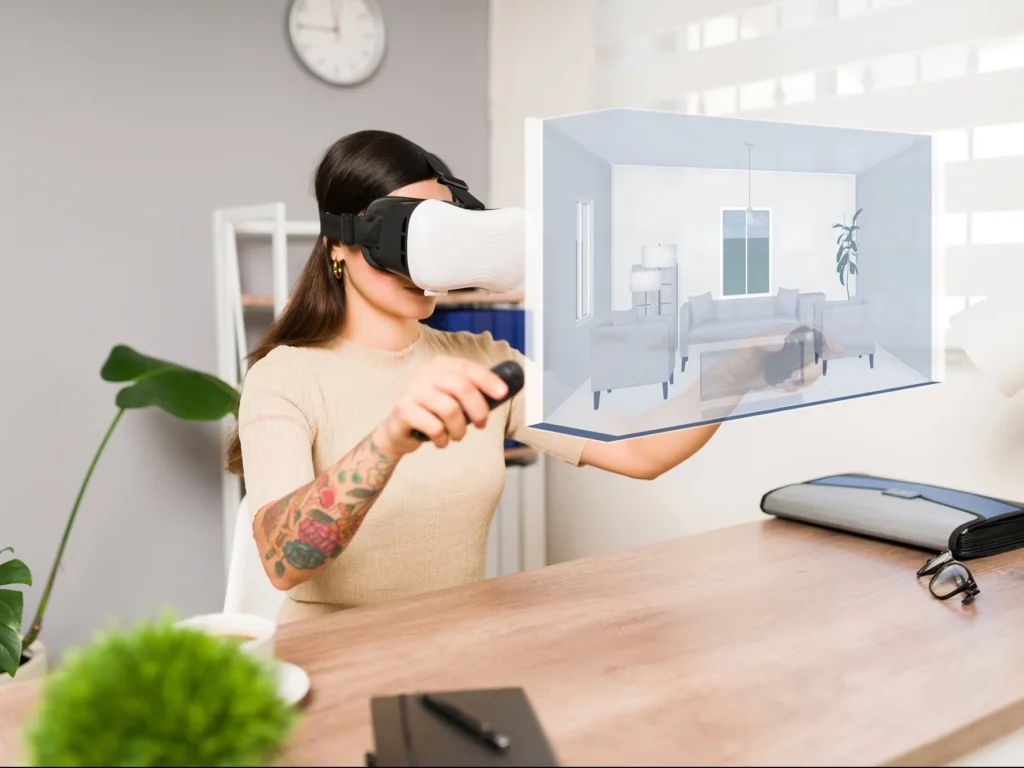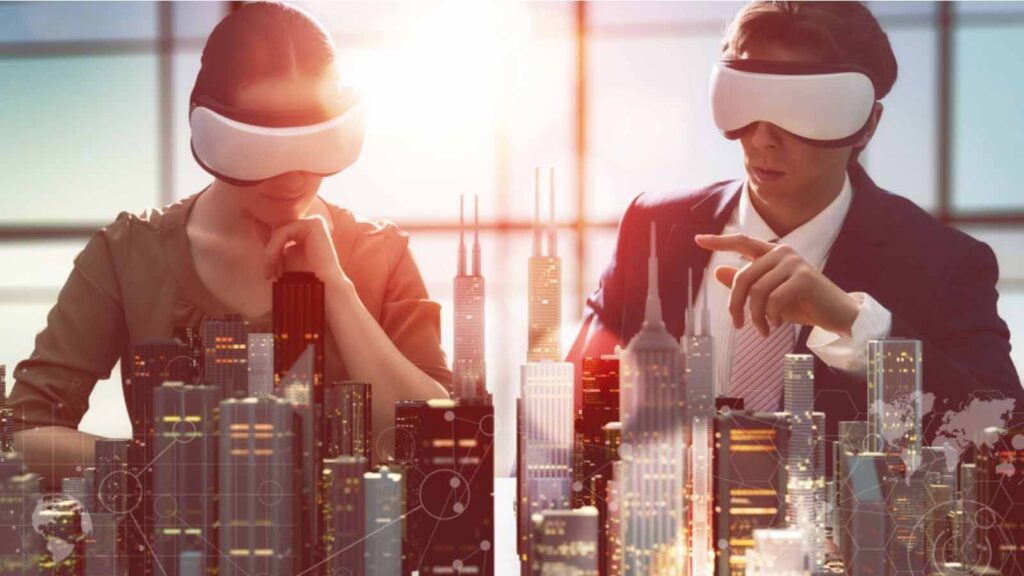The world of real estate marketing has witnessed a revolutionary shift with the advent of 3D virtual tours. Gone are the days when potential buyers had to rely solely on static images and floor plans to get a glimpse of their dream home. 3D virtual tours now offer a cutting-edge and immersive experience, allowing customers to explore properties from the comfort of their own homes. Using advanced technology, these tours provide a 360-degree view of the property, enabling buyers to virtually walk through every room and inspect every corner. Let’s delve into the advantages and impact of this game-changing innovation.
Advantages of Immersive Property Exploration for Buyers
The benefits of 3D virtual tours for buyers are undeniable. They offer a level of engagement and interaction that static images or videos cannot match. With the ability to control their exploration, buyers can move seamlessly from room to room, zoom in on details, and even experience the property in virtual reality if they choose. This immersive experience creates an emotional connection with the property, making customers more likely to remember and consider it seriously. Additionally, computer-generated expeditions empower out-of-town buyers to explore potential homes without the need for costly and time-consuming travel, making the home-buying process more inclusive and efficient.
Enhanced Accessibility and Reach for Global Audiences

Source: entrepreneur.com
The geographical barriers that once limited property exposure have been shattered by 3D computer-generated expeditions. Real estate agents and sellers can now reach a global audience without constraints. International buyers can explore properties in different countries with ease, eliminating the need for multiple visits before making a decision. This newfound accessibility attracts a diverse pool of potential consumers, enriching the market and increasing the likelihood of a successful sale. Moreover, these computer-generated expeditions can be easily shared on various online platforms, including social media and property listing websites, broadening the property’s visibility and boosting its chances of attracting the right customer.
Impact of Virtual Tours on Buyer Engagement and Interest
The impact of 3D virtual expeditions on buyer engagement is undeniable. By offering an interactive and dynamic experience, these tours captivate potential customers from the moment they start exploring. The ability to navigate through the property at their own pace keeps buyers engaged for longer periods, providing more opportunities for them to envision themselves living in the space. This heightened engagement translates into increased interest and a higher likelihood of follow-up inquiries or even offers. As a result, properties with computer-generated expeditions tend to generate more leads and experience faster sales compared to those without this cutting-edge marketing tool.
Reducing Physical Visits: Time and Cost Benefits
One of the most significant advantages of 3D virtual tours is the substantial reduction in the number of physical visits required. Traditionally, potential buyers would need to visit multiple properties to find their ideal home. However, with computer-generated expeditions, buyers can efficiently filter through properties online, saving time and travel expenses. This efficiency benefits both consumers and sellers, streamlining the home-buying process and allowing sellers to focus on more serious and interested buyers. Additionally, it reduces the environmental impact associated with frequent property visits, aligning with sustainable and eco-friendly practices.
Boosting Credibility and Trust in Property Listings
Virtual tours play a vital role in boosting the credibility and trustworthiness of property listings. They provide transparency and eliminate any skepticism that buyers may have about the accuracy of property descriptions. By allowing customers to explore every nook and cranny of a property, computer-generated tours leave little room for surprises during physical visits. This transparency builds trust between consumers and sellers, creating a positive impression that lasts throughout the transaction. Real estate agents who incorporate virtual expeditions into their marketing strategy showcase their commitment to providing the most accurate and reliable information, further solidifying their reputation as credible professionals.
How Virtual Tours Showcase Property Features Effectively
The power of visual storytelling cannot be understated, and 3D computer-generated expeditions excel in this domain. These expeditions effectively showcase property features, enabling potential buyers to see the flow and layout of the space. They can visualize how their furniture and personal belongings would fit into each room, aiding in their decision-making process. Furthermore, computer-generated tours highlight architectural details, interior design, and amenities, allowing properties to stand out from the competition.
Stand Out from Competitors with Cutting-Edge Marketing

Source: mobilelive.ca
In today’s competitive real estate market, standing out from the crowd is crucial. Incorporating 3D virtual tours into a marketing strategy sets properties apart from competitors, impressing potential buyers with modern and innovative approaches. As virtual tours become more common, early adopters gain a significant advantage, positioning themselves as forward-thinking professionals who embrace the latest technologies to benefit their clients. The wow factor associated with computer-generated tours is a powerful marketing tool that draws attention to properties, attracting more interest and increasing the likelihood of securing the best possible deal.
Expanding the Market with Remote and Relocation Buyers
Remote work and the desire for a change of scenery has led to a rise in remote and relocation buyers. These individuals are often looking to move to new areas, making physical visits challenging. 3D computer-generated tours cater to this growing segment of the market, enabling remote buyers to explore properties as if they were there in person. This convenience allows them to narrow down their options and make informed decisions without the need for immediate travel. For sellers, this opens up a new pool of potential buyers, expanding their market reach and increasing the chances of finding the perfect buyer quickly.
Overcoming Common Challenges in Implementing Virtual Tours
While the benefits of 3D virtual tours are abundant, there are some challenges to overcome in their implementation. One of the primary challenges is the initial cost and time investment required to create high-quality computer-generated expeditions. However, as technology advances, costs are gradually decreasing, making computer-generated tours more accessible to a broader range of real estate professionals. Additionally, ensuring the tours are user-friendly and compatible with various devices is crucial to providing a seamless experience for potential buyers. Regularly updating the virtual expeditions to reflect any changes in the property is also essential to maintain accuracy and prevent disappointment during physical visits.
Future Prospects and Trends of 3D Virtual Tours in Real Estate

Source: pureweb.com
The future of 3D virtual tours in real estate looks promising. As technology continues to advance, virtual expeditions are likely to become more sophisticated and accessible. We may see the integration of artificial intelligence and augmented reality, further enhancing the immersive experience for potential buyers. Virtual staging and customization options could also become more prevalent, allowing buyers to envision their dream home with personalized touches. Additionally, as environmental concerns gain traction, computer-generated expeditions could play an even more significant role in reducing carbon footprints associated with property visits, aligning with sustainable practices in the industry.
Conclusion
3D virtual tours have revolutionized real estate marketing, offering countless advantages for buyers and sellers alike. From immersive property exploration to increased global accessibility, these cutting-edge expeditions have transformed the way properties are showcased and experienced. They not only save time and costs but also boost credibility and trust in property listings. By effectively showcasing property features, virtual tours help properties stand out from the competition and appeal to a diverse and global audience. As technology continues to evolve, the future prospects of 3D virtual tours in real estate are exciting, promising a more engaging, efficient, and sustainable home-buying experience for all. Embracing this game-changing innovation is not just an option but a



